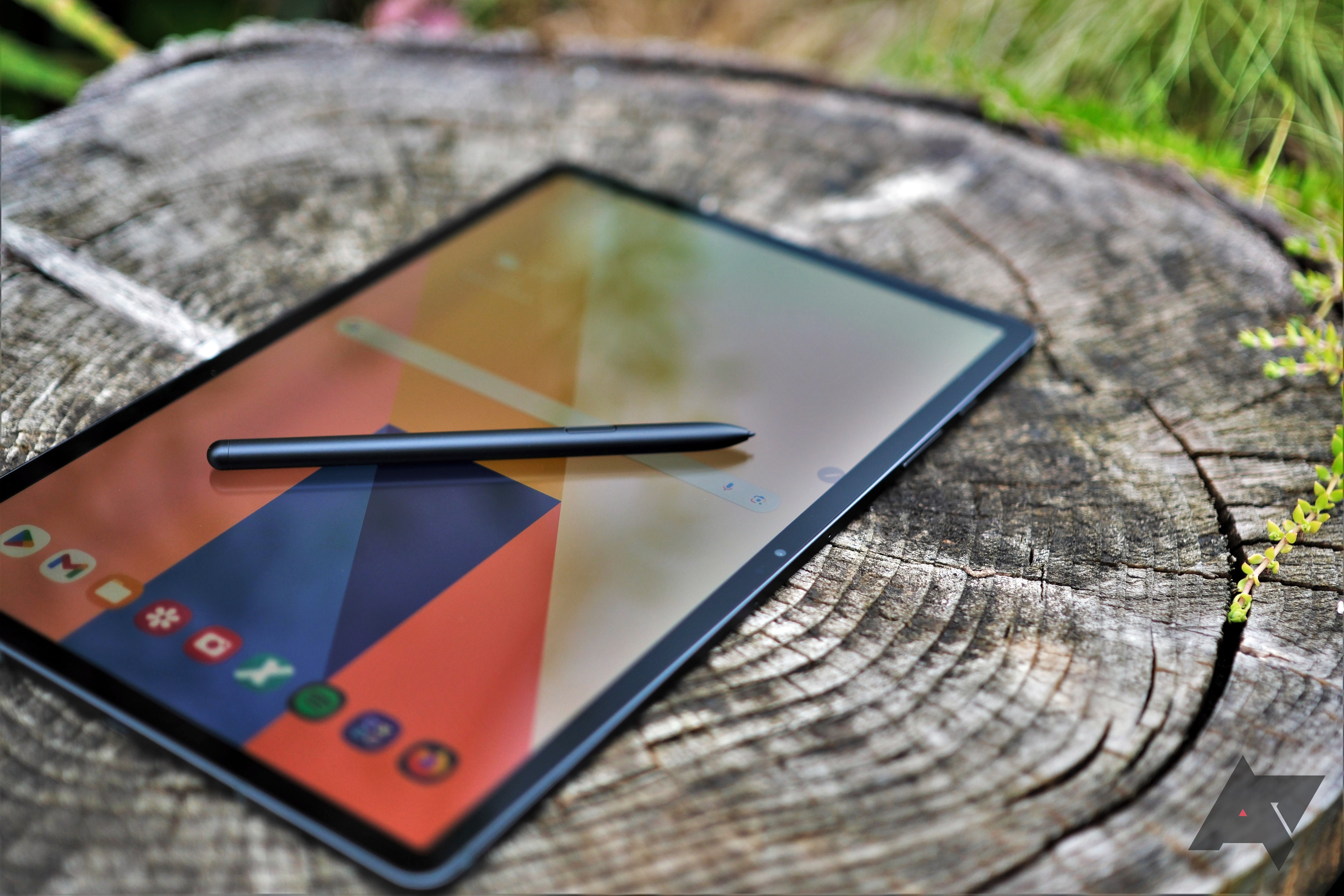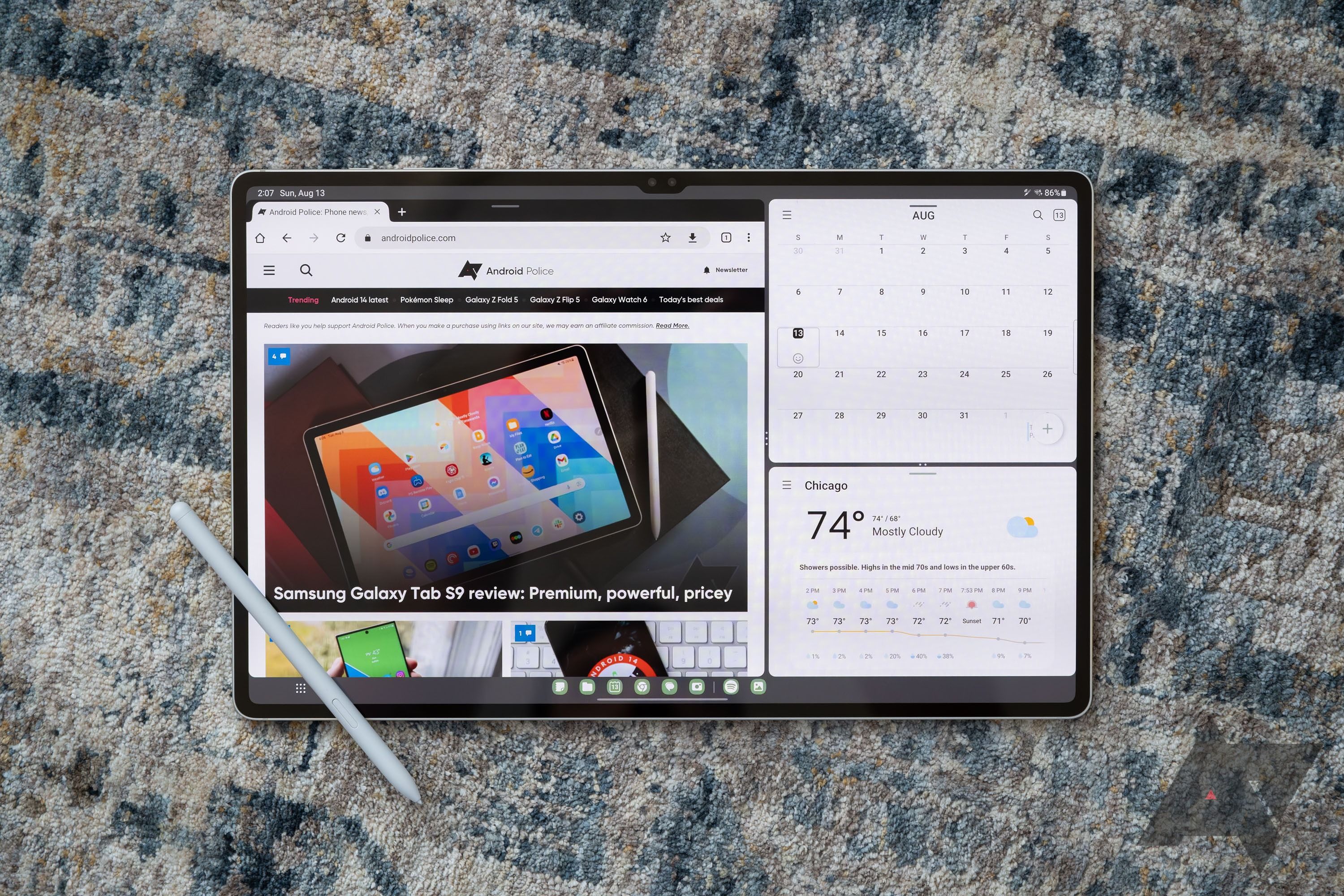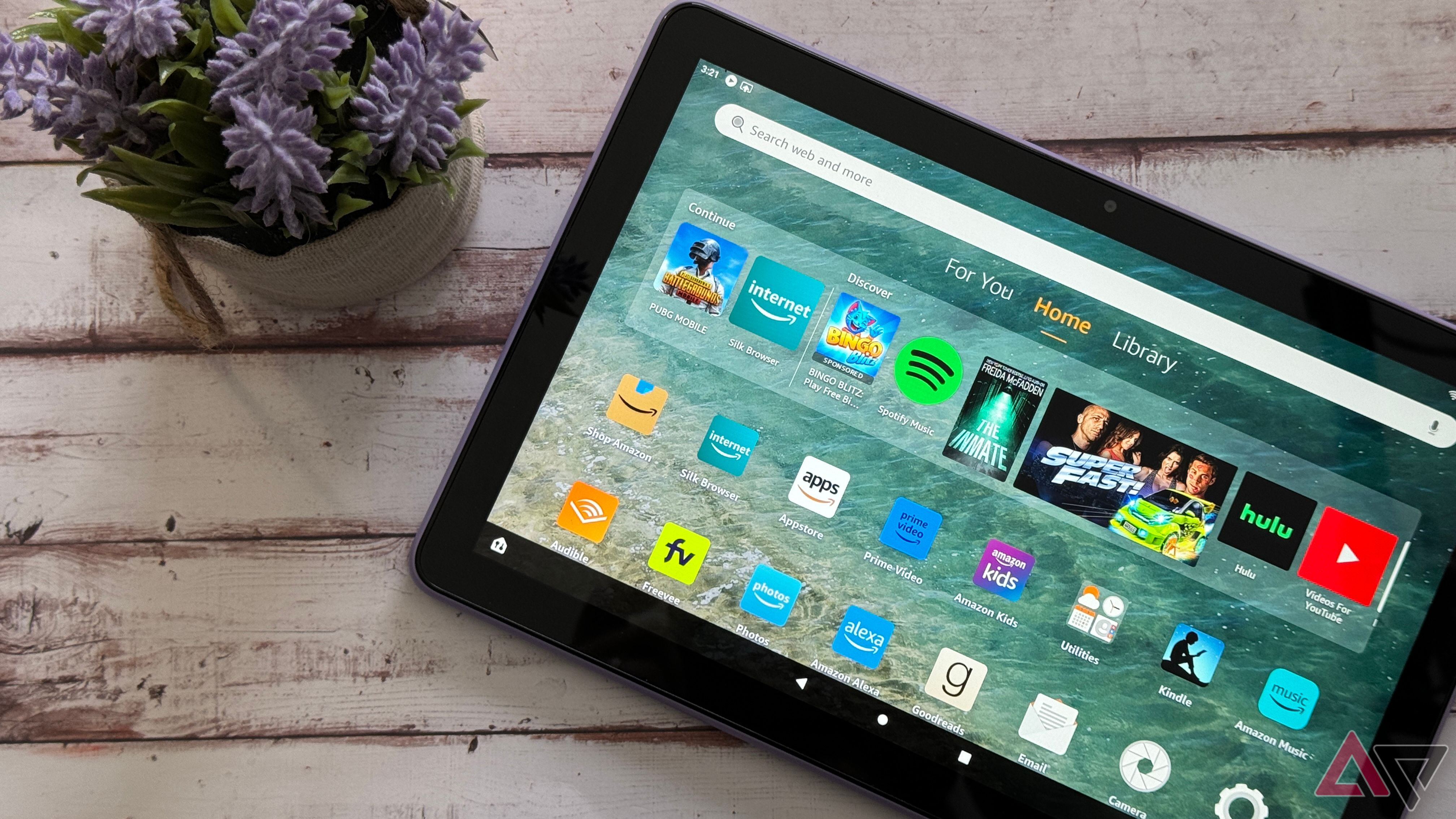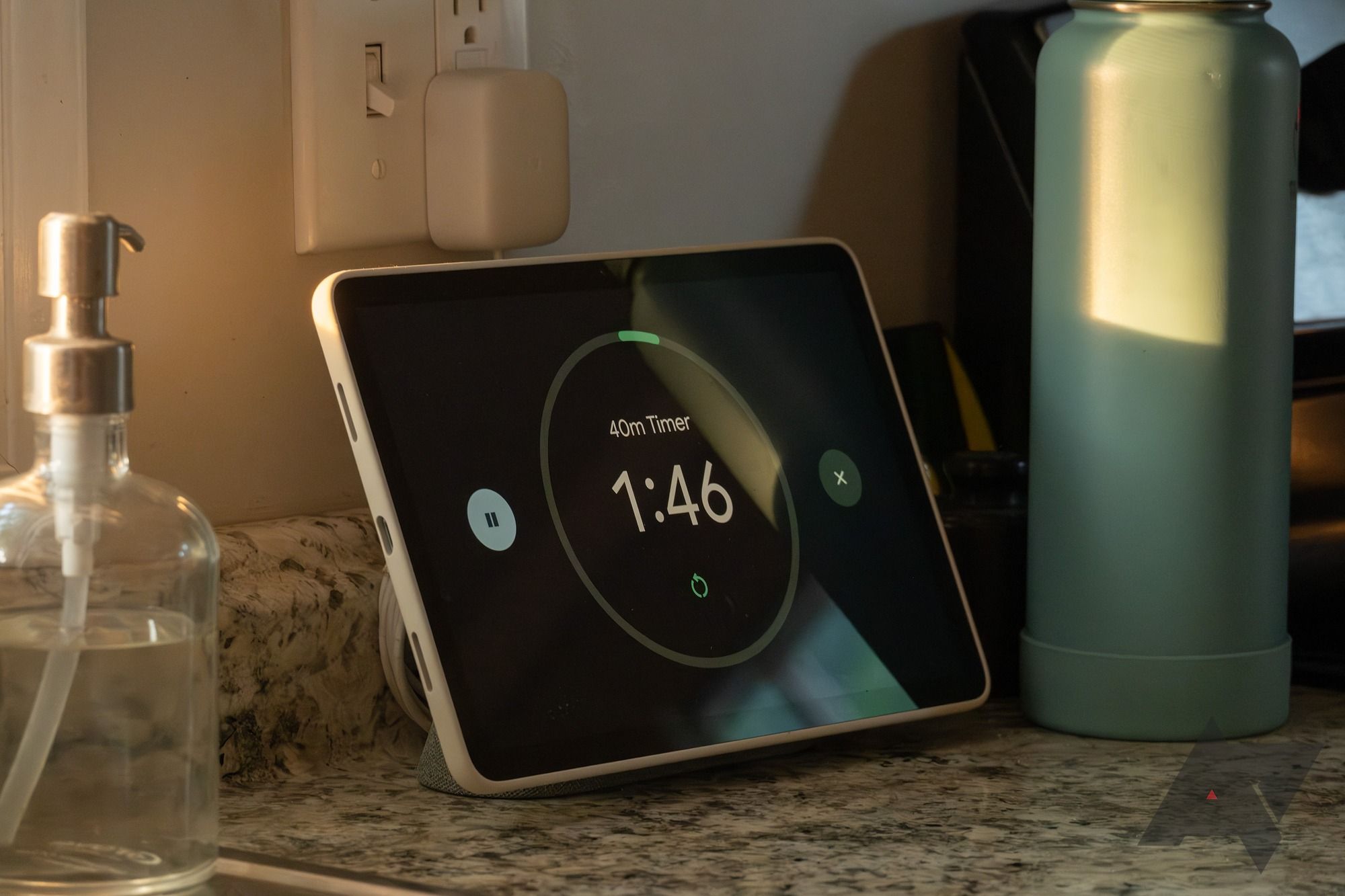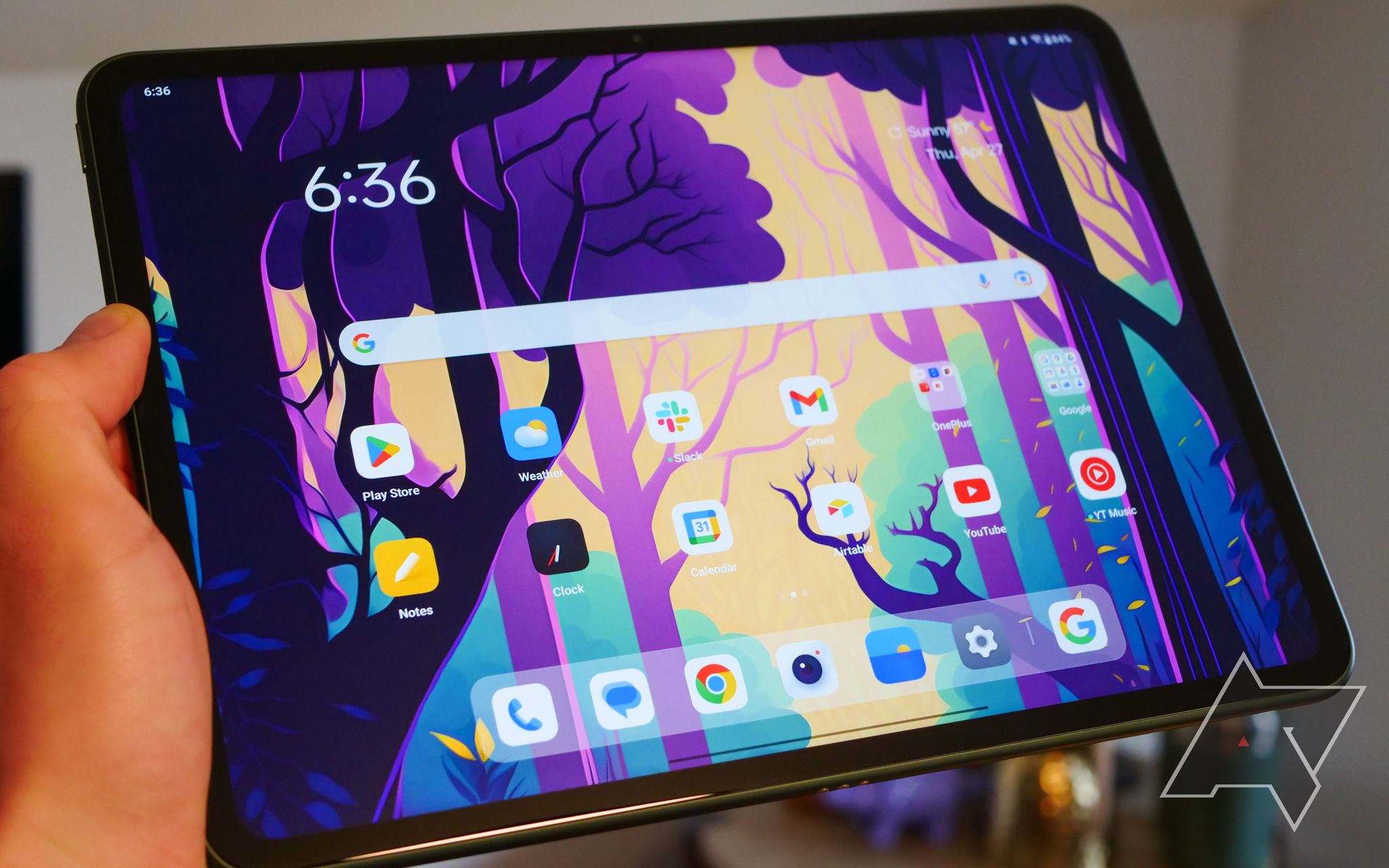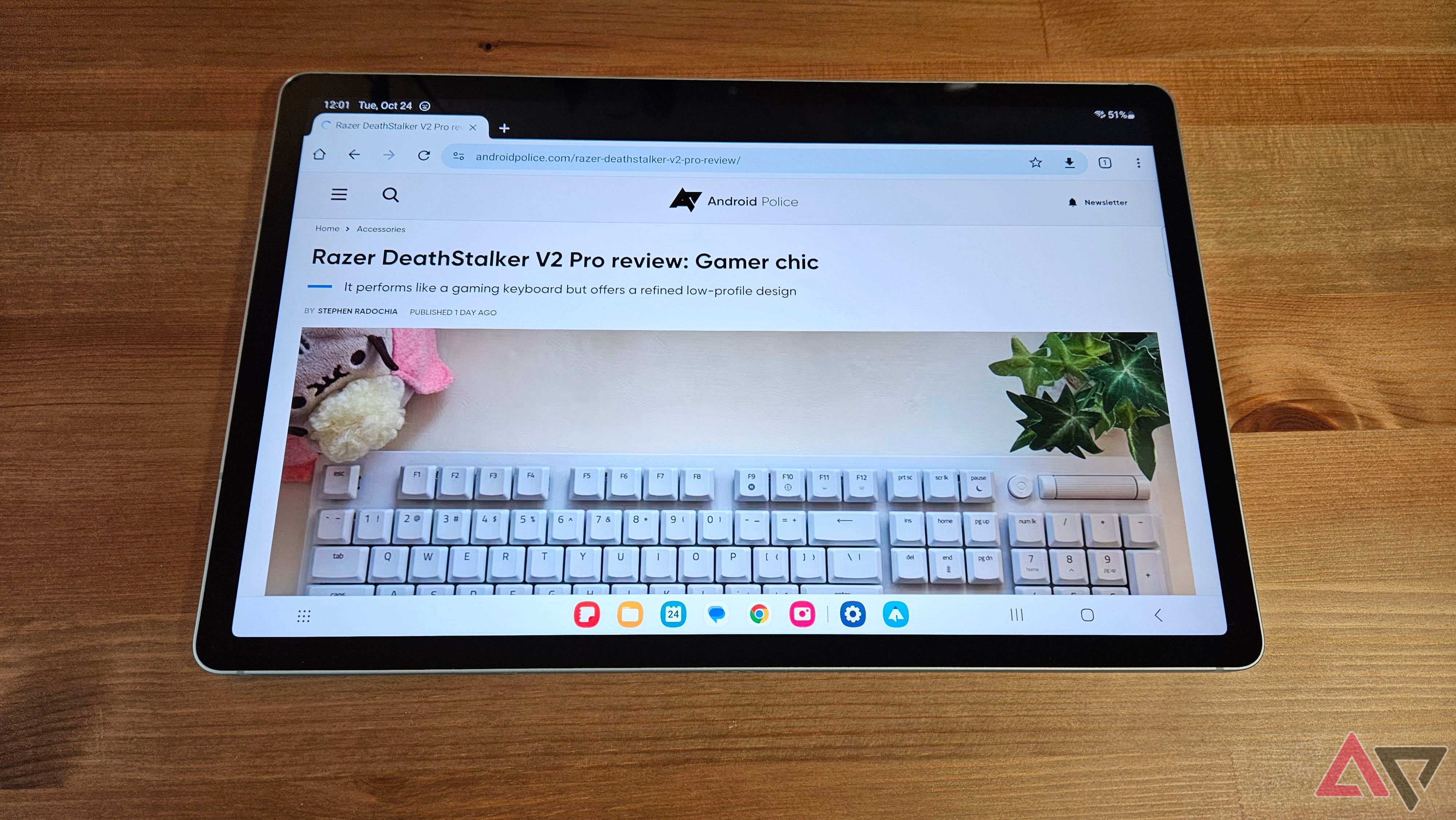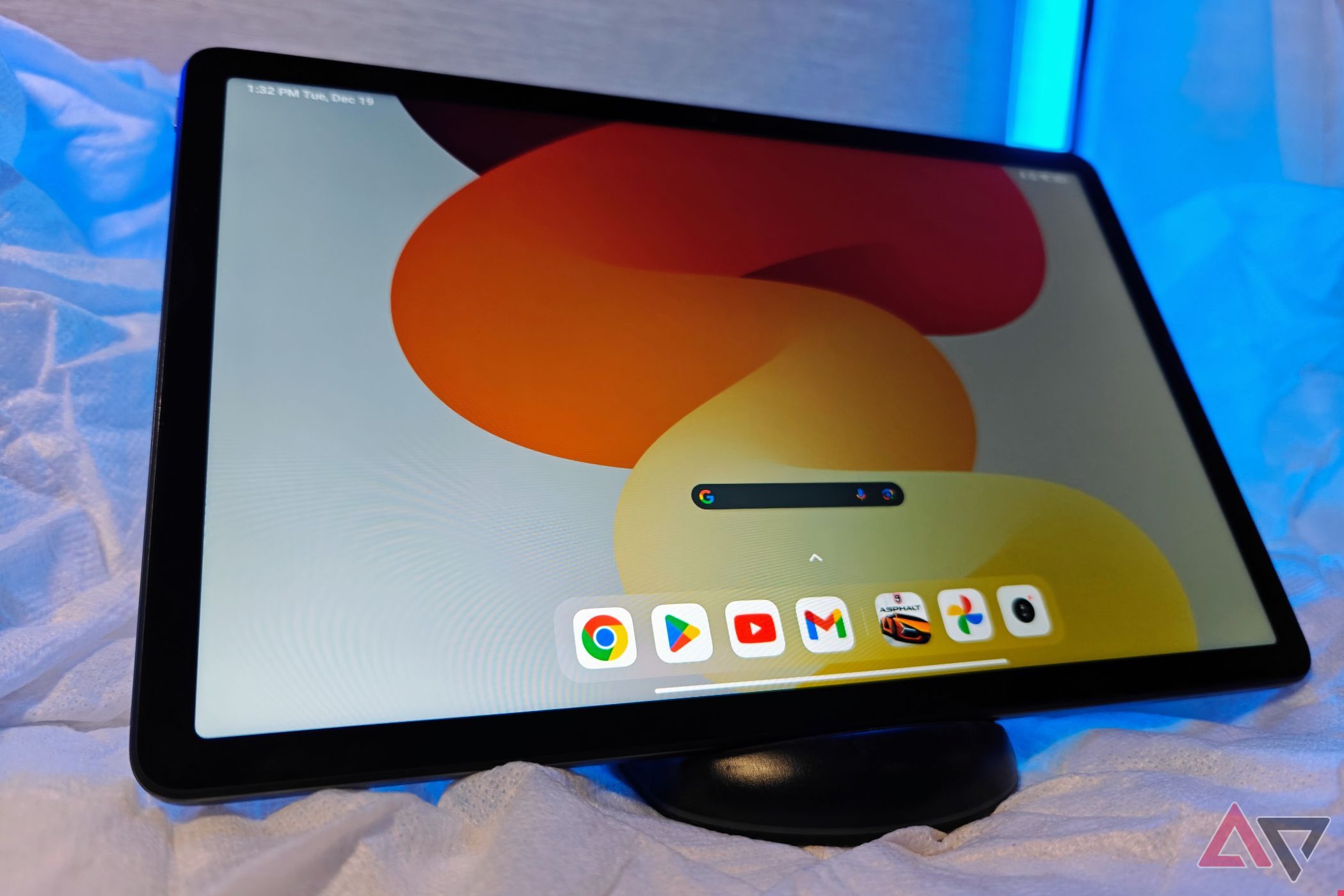While Apple may still have a firm grip on the tablet market with its iPad lineup, Android tablets are only improving and have a leg up on Apple when it comes to hardware. With super affordable options for people who need a larger screen to watch movies to massively large tablets with styluses that function as a tablet and smart display in one, there’s something for everyone in the Android market.
Of course, iPadOS does have more thoughtfully designed large-screen apps than Android OS currently, but we can’t help but get excited at all the options out there. If you’re in the market for an Android tablet, you have a vast selection to choose from including options like Samsung, Google, OnePlus, Amazon, and more. Many of these tablets offer unique features that set them apart from each other — here are the best Android tablets right now.
Our favorite Android tablets
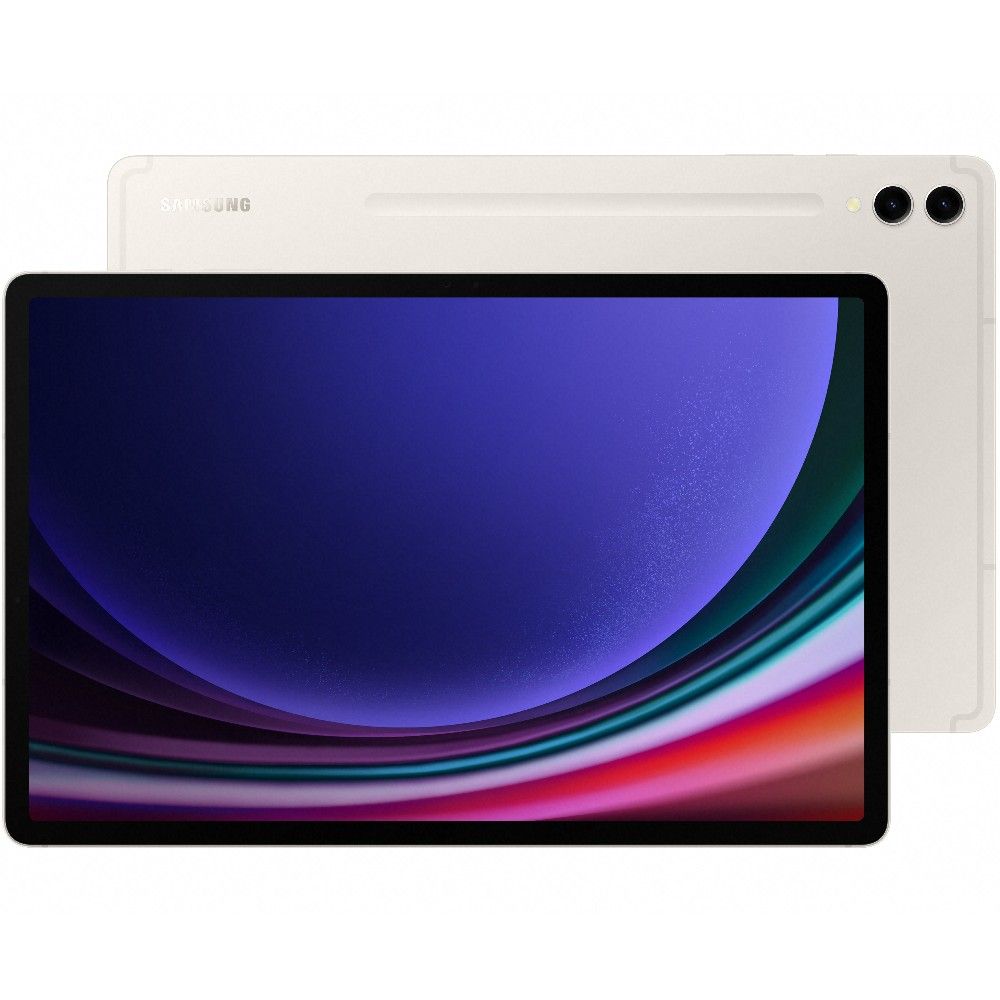
Samsung Galaxy Tab S9+
Well-rounded and easy to love
The Galaxy Tab S9+ might not be the absolute best tablet that Samsung offers, but it is the best option for most people. It has a gorgeous 12.4-inch AMOLED display that’s easier to manage than the Tab S9 Ultra, and it’s powered by the same Snapdragon 8 Gen 2 chipset.
- Beautiful 12.4-inch AMOLED display
- Sleek design
- S Pen comes bundled with the tablet
- Strong Snapdragon 8 Gen 2 performance
- Premium pricing
- Wide aspect ratio might not be for everyone
- Expensive first-party accessories
The Samsung Galaxy Tab S9+ bumped its Tab S8+ predecessor out of the way to become our favorite Android tablet. It might be about $200 more than the standard Tab S9, but the extra money lands you a larger 12.4-inch AMOLED display, an extra rear-facing camera, a larger battery, and optional 5G connectivity.
The design of the tablet really hasn’t changed for this generation, and you’re still getting a sleek look with a wide aspect ratio and a slot on the back to magnetically attach the included S Pen.
The 12.4-inch AMOLED display with 120Hz refresh rate is absolutely stunning. It might be a bit wide for some people, but it’s ideal for sitting back and watching TV and movies. The back of the tablet is home to 13MP and 8MP cameras, while the front has a 12MP selfie camera. If you’d like to remain connected everywhere you go, optional 5G LTE connectivity is available for a $150 premium. This is the only S9 tablet with the option; you otherwise get Wi-Fi 6E and Bluetooth 5.3 connectivity.
The Tab S9+ has the same Qualcomm Snapdragon 8 Gen 2 chipset as its other S9 siblings, meaning you won’t miss out on any CPU performance by not opting for the Ultra model. It comes with 12GB of RAM, up to 512GB of storage (which can be expanded with a microSD card), and runs on a 10,090mAh battery. Android 13 and Samsung’s One UI 5.1 come preinstalled, and you get software and security updates for years to come.
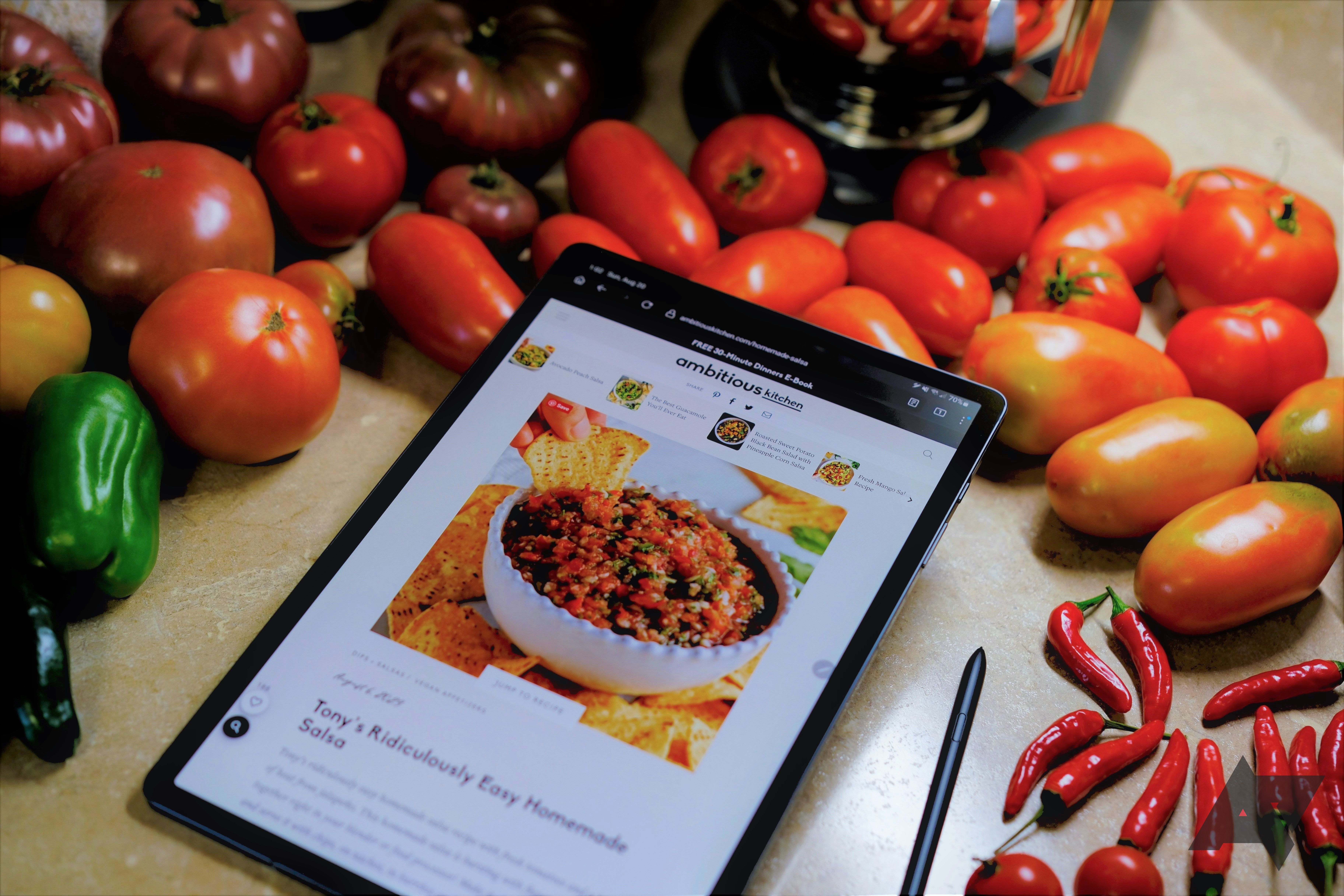
Samsung Galaxy Tab S9+ review: Goldilocks edition
Not too small, not too expensive, the Tab S9+ is juuuuuust right
Bear in mind that Samsung launched its affordable(ish) range of Galaxy Tab S9 FE tablets recently — slightly stripped-back versions of both the Tab S9 and Tab S9+, with prices starting at $450. We’re still in the process of putting these new FE versions through their paces, so we can’t pass full judgment yet, but the Tab S9 FE or Tab S9 FE+ may be a good option if you want a premium-feeling tablet for a little less.
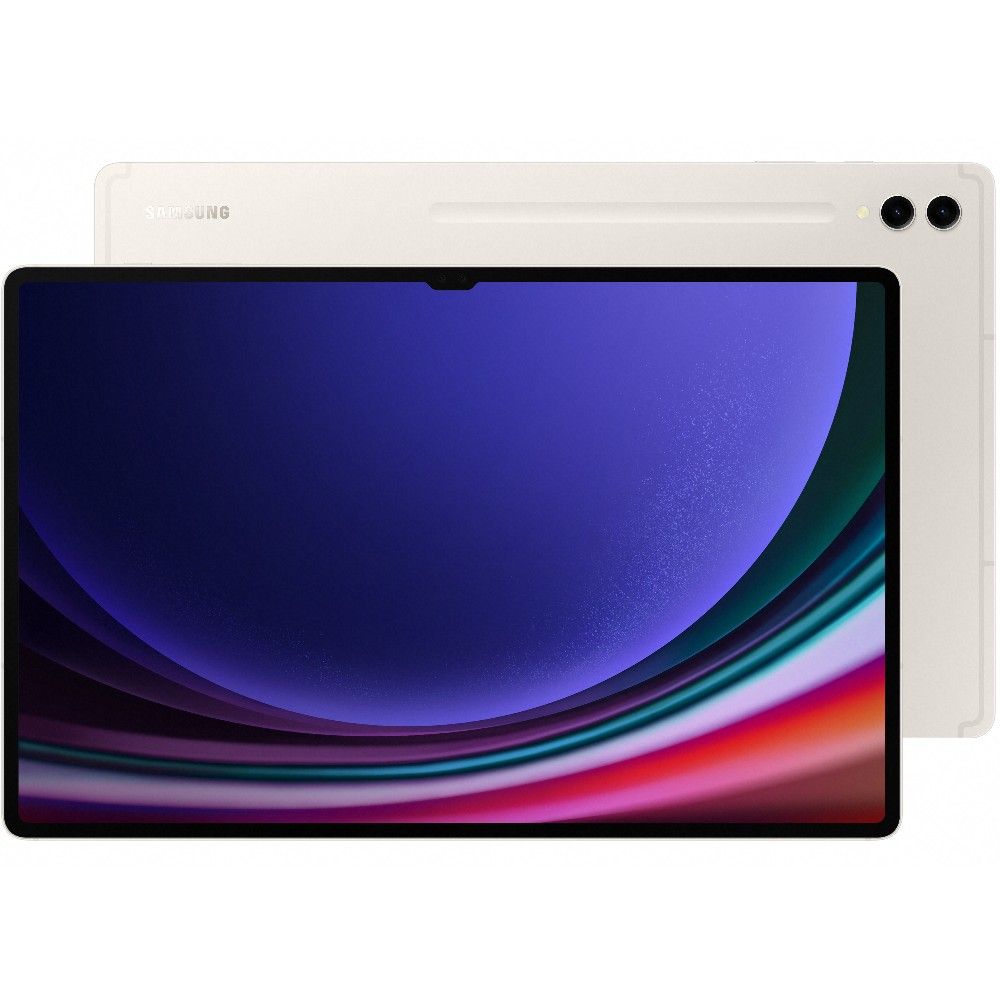
Samsung Galaxy Tab S9 Ultra
For those who want the most of everything
The Tab S9 Ultra is Samsung’s largest tablet, available with the most RAM and storage as well as an extra 12MP selfie camera on the front. It’s very expensive, but it’s the right choice for those who want no compromises.
- Glorious (and enormous) 14.6-inch AMOLED display
- Strong Snapdragon 8 Gen 2 performance
- S Pen comes bundled with the tablet
- Two front-facing cameras
- Expensive even for base models
- Might be too large for those on the go
The Galaxy Tab S9 Ultra takes everything good about Samsung tablets and pushes it to a point that some might consider excessive. But if you can stomach the steep price, you’ll have in your hands a tablet with a brilliant 14.5-inch AMOLED screen at a 1,848 x 2,960 resolution and 120Hz refresh rate.
Bezels remain thin around all sides, though there is a small notch at the top (in landscape mode, thank goodness) to house the tablet’s two 12MP front-facing cameras. It’s an ideal device for watching movies and TV, plus the larger screen makes it easier to multitask.
Like its smaller siblings, the Tab S9 Ultra is powered by the Qualcomm Snapdragon 8 Gen 2 chipset. It’s configurable with either 12 or 16GB of RAM, as well as up to 1TB of storage space (expandable with a microSD card), and it has an 11,200mAh battery — the largest of the S9 lineup — to keep up with the over-sized display.
The biggest drawback to the Tab S9 Ultra (aside from its size, meaning it can be a little unwieldy) is the price. Base models with 12GB of RAM and 256GB of storage start at $1,200, with prices climbing all the way to $1,620 for 16GB of RAM and 1TB of storage before you add on the extra cost of a case or keyboard. That’s more than a lot of great laptops cost, especially if you’re shopping for a Chromebook. Still, it’s the right choice if you want to get the absolute most out of your Android tablet.
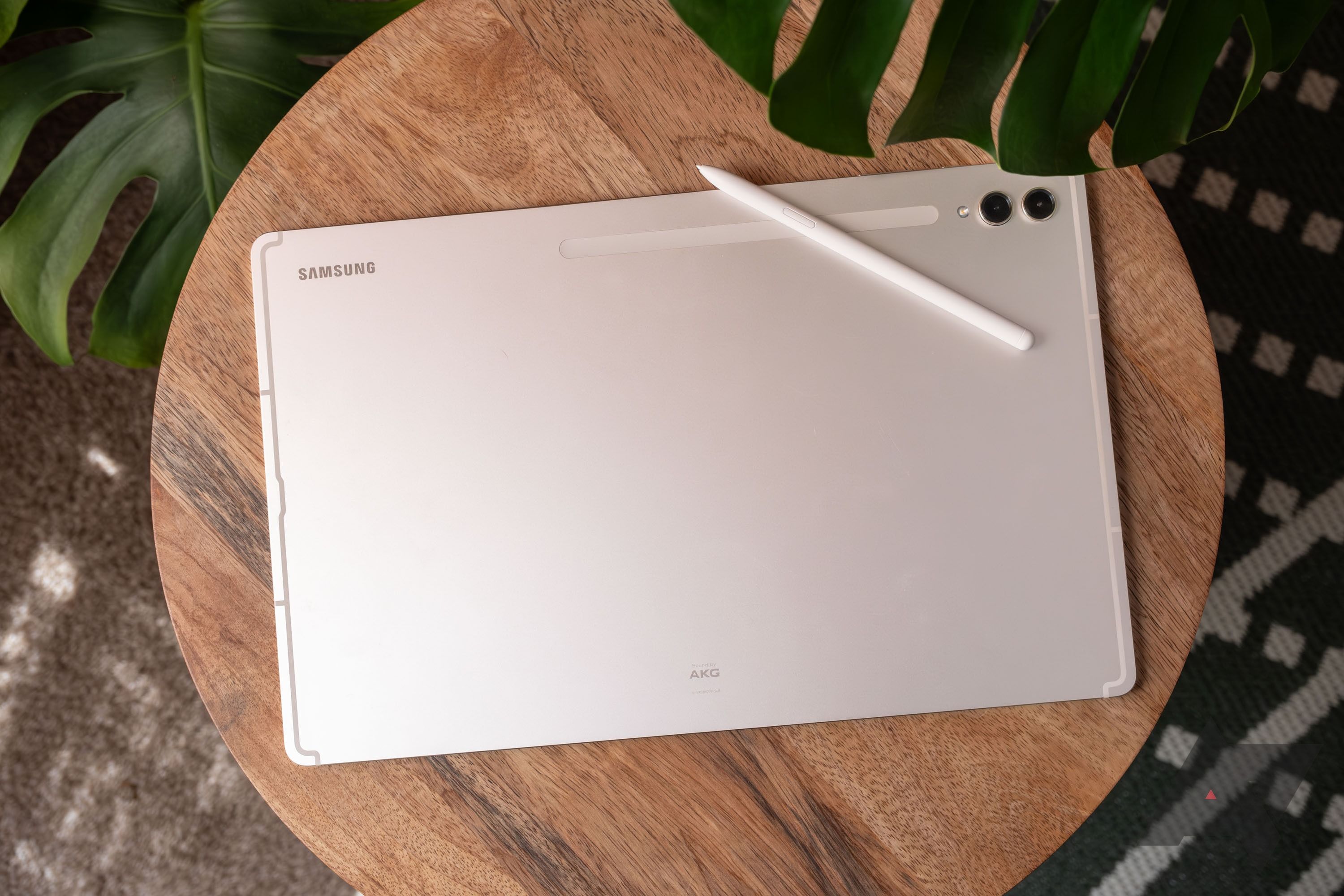
Samsung Galaxy Tab S9 Ultra review: The best big Android tablet
A killer media machine, but you’ll pay for the privilege
Be sure to check out our picks for the best Galaxy Tab S9 Ultra accessories to help you hit the ground running.
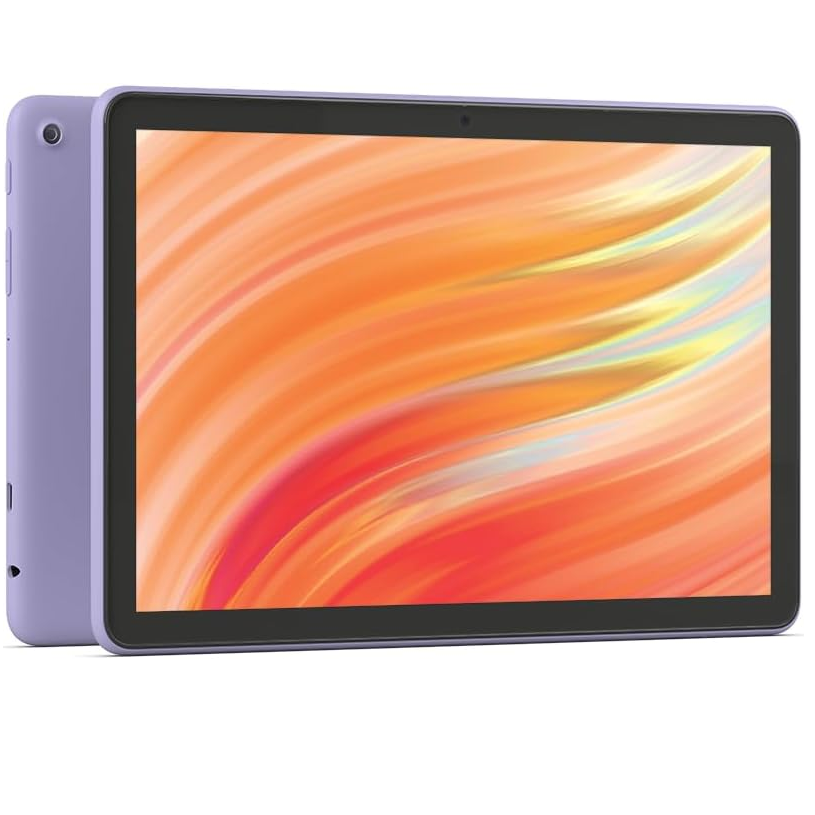
Amazon Fire HD 10 (2023)
Fantastic package for under $140
Amazon has updated the Fire HD 10 for 2023, adding faster performance and USI stylus support. It still features 3GB of RAM and a bright 10.1-inch 1080p LCD. With over 13 hours of battery life, it’s ideal for your next binge-watching session, with a headphone jack for added compatibility with older headsets.
- Bright display
- Decent performance
- Long software support
- Poor cameras
- Slow charging
Amazon’s recently refreshed Fire HD 10 still represents one of the best values in tech, as it can often be found for under $100. Despite the budget price, the Fire HD 10 features a gorgeous 10.1-inch 1080p display and fantastic battery life, perfect for a long night of binge-watching. The company also boasts the 2023 Fire HD 10 is 25% faster than previous generations, and that held up in testing, as apps like Amazon’s Silk Browser ran noticeably better.
It doesn’t have the vibrance or contrast of an OLED, but the Fire HD 10s LCD is surprisingly poppy and bright, with increased clarity over the 2021 model. In addition, the new Fire HD maintains fan favorites like a 3.5mm headphone jack and MicroSD card slot. And while you’ll receive more years of software support than tablets in this price range, it comes at a price; the Fire HD 10 runs Fire OS, Amazon’s Android skin. Android apps still work, and you can sideload the Google Play Store for a more familiar Android feel, but creature comforts like gesture navigation still won’t be available. It’s a trade-off most are willing to accept because the lightweight nature of Fire OS means Amazon can keep the user experience acceptable even years after launch.
Amazon has added USI stylus support to the new Fire HD 10, with 4,096 levels of pressure sensitivity, giving artists an inexpensive option for drawing. Moreover, a Bluetooth keyboard case can be fitted to the Fire HD 10, giving the Amazon tablet more versatility for work at school or the office. All told, it’s difficult to beat the Amazon Fire HD tablet series when you consider the display quality, performance, and software support you receive for around $100.
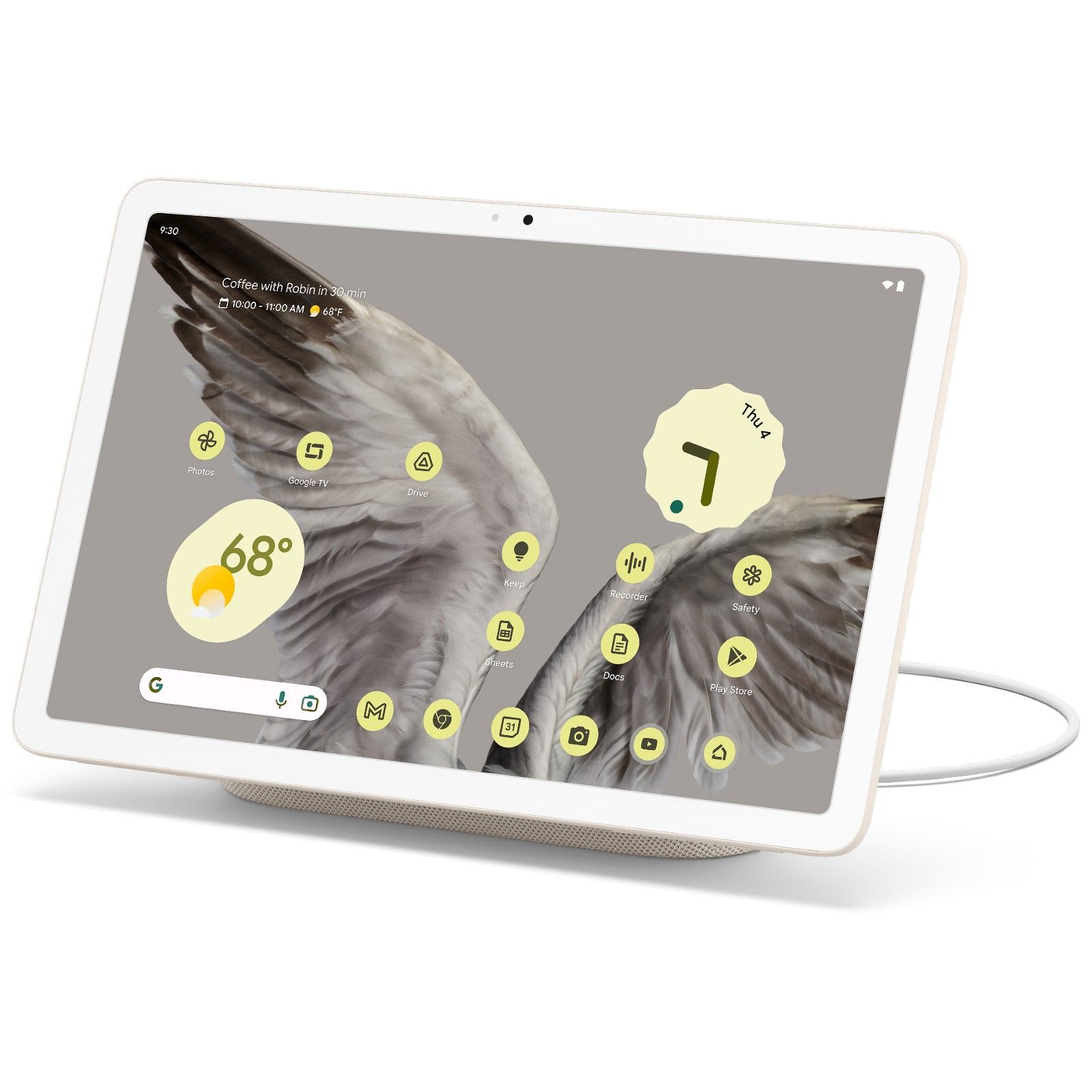
Google Pixel Tablet
A tablet and a sort-of smart display in one
Looking for a smart home hub that can double as a gaming tablet? Google’s Pixel Tablet fits the bill. It flaunts a 10.9-inch IPS LCD screen, backed by the power of the Google Tensor G2 chipset and 8GB RAM for a snappy experience. Its camera setup includes an 8 MP rear and front camera, perfect for capturing those spontaneous moments or crystal-clear video calls.
The Google Pixel Tablet is the company’s long-overdue return to the tablet form factor. The tablet is a good midranger, with a perfectly decent 60Hz LCD screen, stereo speakers, and solid performance thanks to its Tensor G2 chipset and eight gigs of RAM — the same setup that drives the Pixel 7 series.
We’re hopeful that Google will address some of the drawbacks of the Pixel Tablet in 2024 the second version of the Android slate. It would be something special to see Google actually rival what Samsung offers in the Android market.
Possibly more interesting than the tablet itself is the Charging Speaker Dock it comes bundled with. When placed on its dock, the Pixel Tablet becomes a quasi-smart display: in Hub Mode, the tablet can accept Hey Google commands and functions as a Chromecast target for both audio and video. Sound is routed through the dock’s speaker, giving the tablet’s very average built-in speakers a boost.
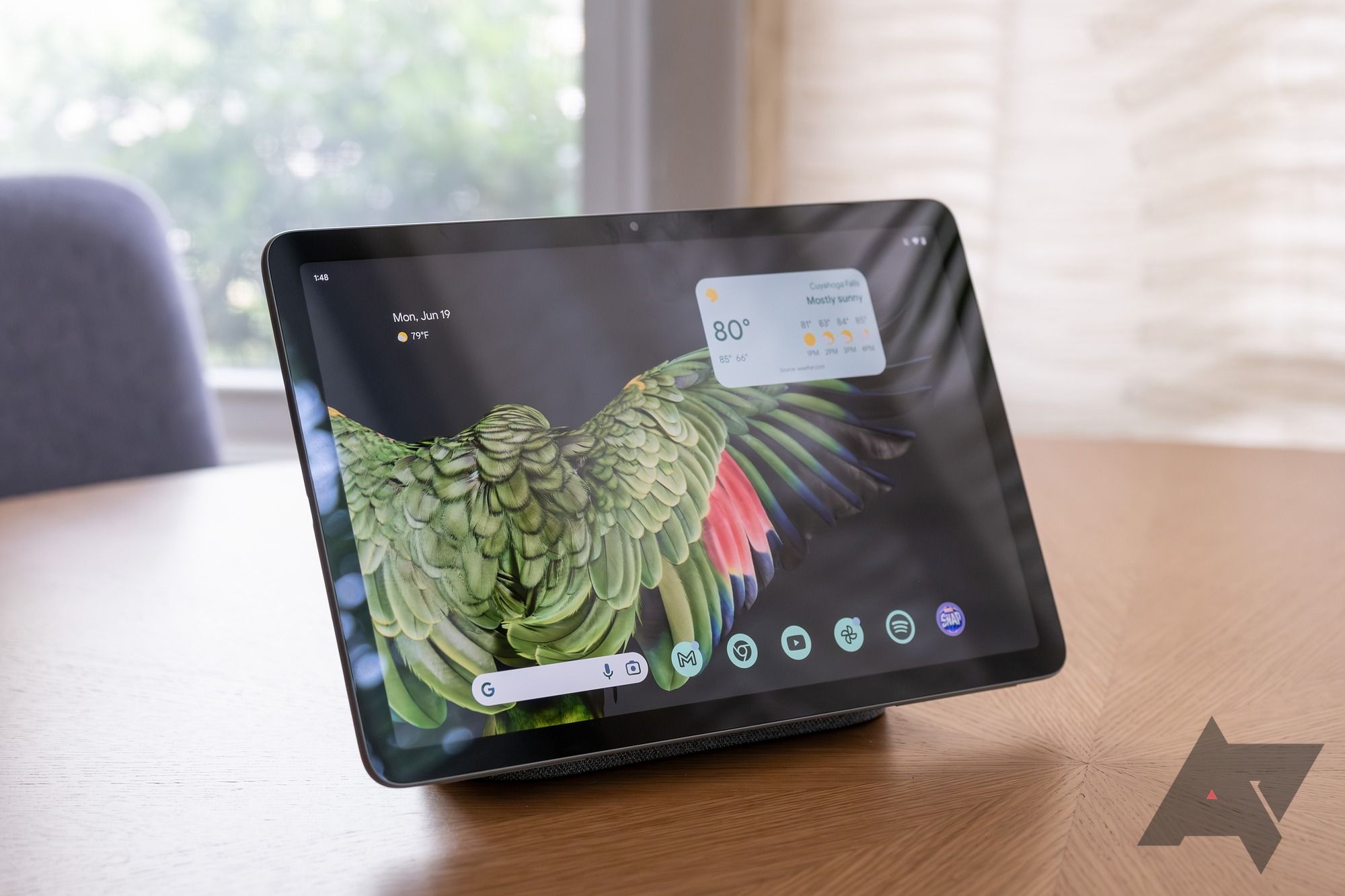
Google Pixel Tablet review: That first-gen feeling
It’s a fine midranger, but the Pixel Tablet’s best ideas are half-baked
The Pixel Tablet is sold bundled with its dock for $500 — a decent deal on a double-duty device. The speaker dock’s audio is okay at best, and Hub Mode lacks some features you’ll find on Google’s Nest speakers and smart displays, but if those limitations won’t bother you, the Pixel Tablet may be an interesting option.
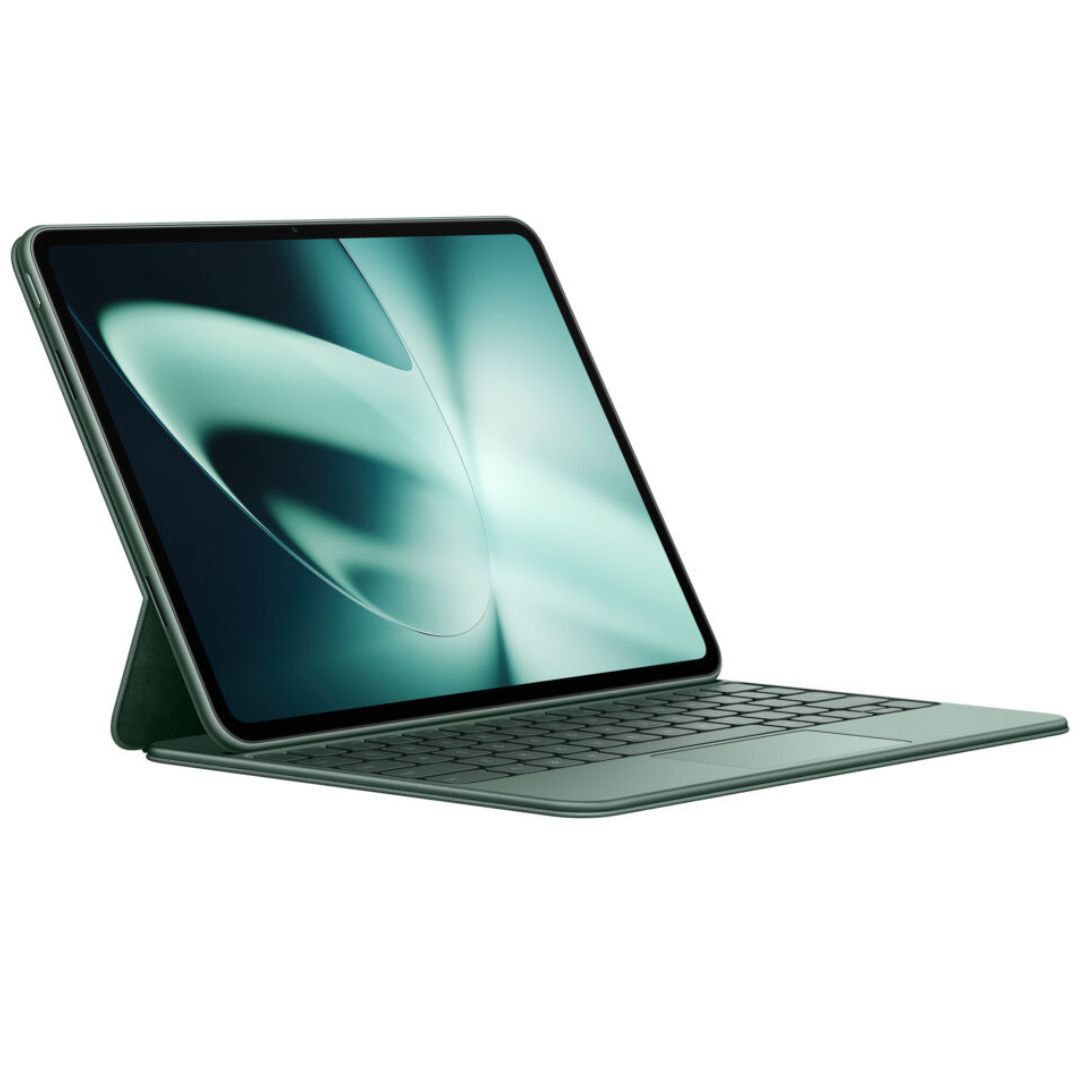
OnePlus Pad
OnePlus’s first tablet is pretty good
OnePlus’s first tablet, the OnePlus Pad, is an admirable first try, with strong performance, long battery life, and Android 13 out of the box. OnePlus also has some neat optional accessories to go along with it.
- Crisp 7:5 display
- Long battery life and superfast 67W charging
- Strong performance
- No fingerprint sensor
- Centered camera bump is weird
- Some OxygenOS bugs
As OnePlus’s inaugural tablet, the OnePlus Pad gets quite a bit right. Performance is solid, battery life is very good, and the screen has an aspect ratio of 7:5, which makes it comfortable for many tablet tasks, like reading and browsing the internet — though it’s not ideal for standard 16:9 video.
OxygenOS takes a bit of getting used to, with a few quirks you won’t find in other Android skins, but nothing that would prevent you from buying a OnePlus Pad. It’s powered by a Mediatek Dimensity 9000, a capable chipset with enough power for daily tasks and more intense games. It features a curvier design than some of its contemporaries, but the result isn’t always smooth — you’ll have to live with a rather large camera hump, keeping it from laying flat on surfaces.
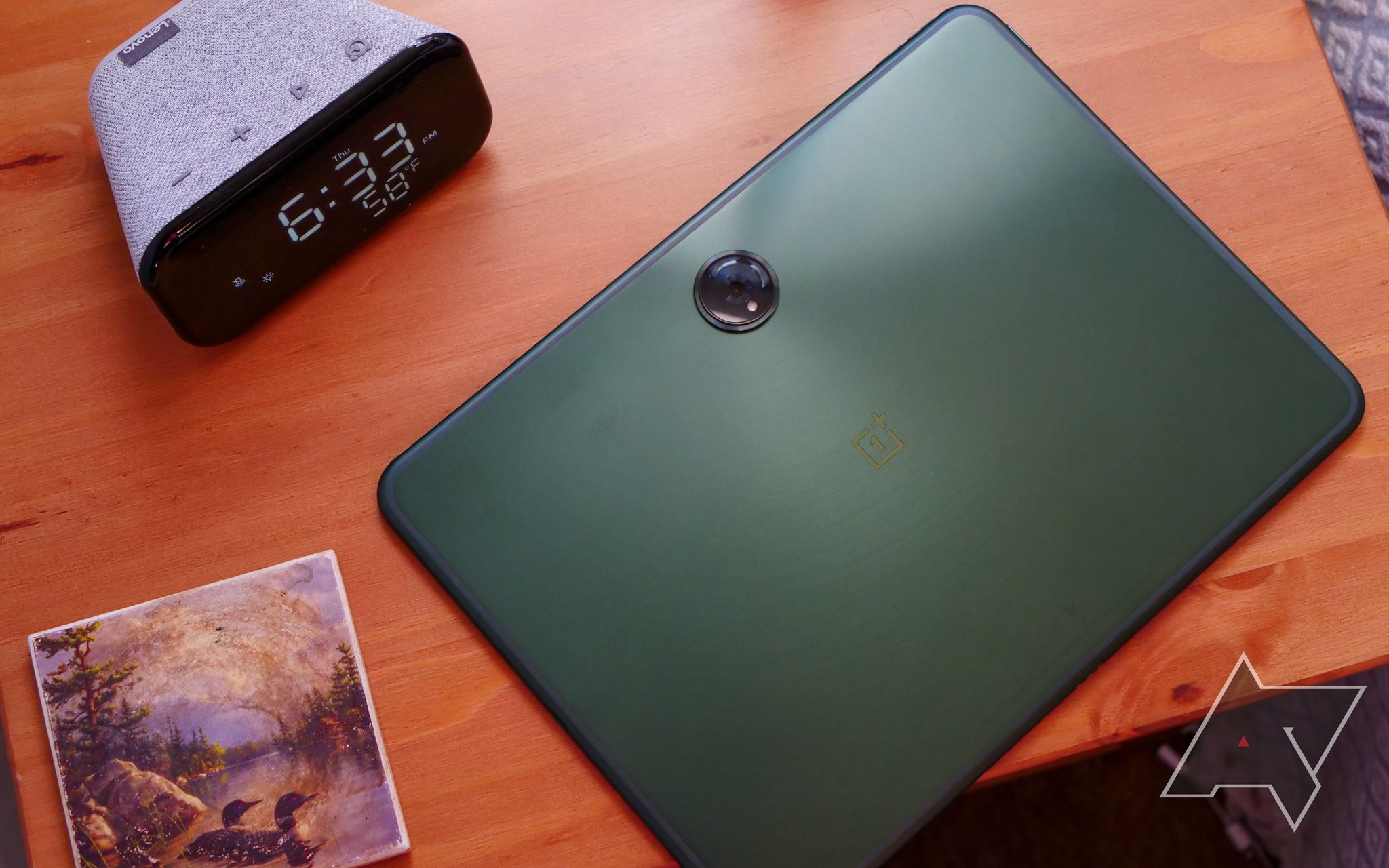
OnePlus Pad review: A new challenger enters the ring
A welcome addition to the Android tablet market, despite a few questionable choices
The OnePlus Pad has OnePlus’s characteristically quick charging, too, at up to 67W. OxygenOS is occasionally annoying and the tablet doesn’t have a fingerprint sensor, but if those don’t sound like major drawbacks to you, it’s a great pick.
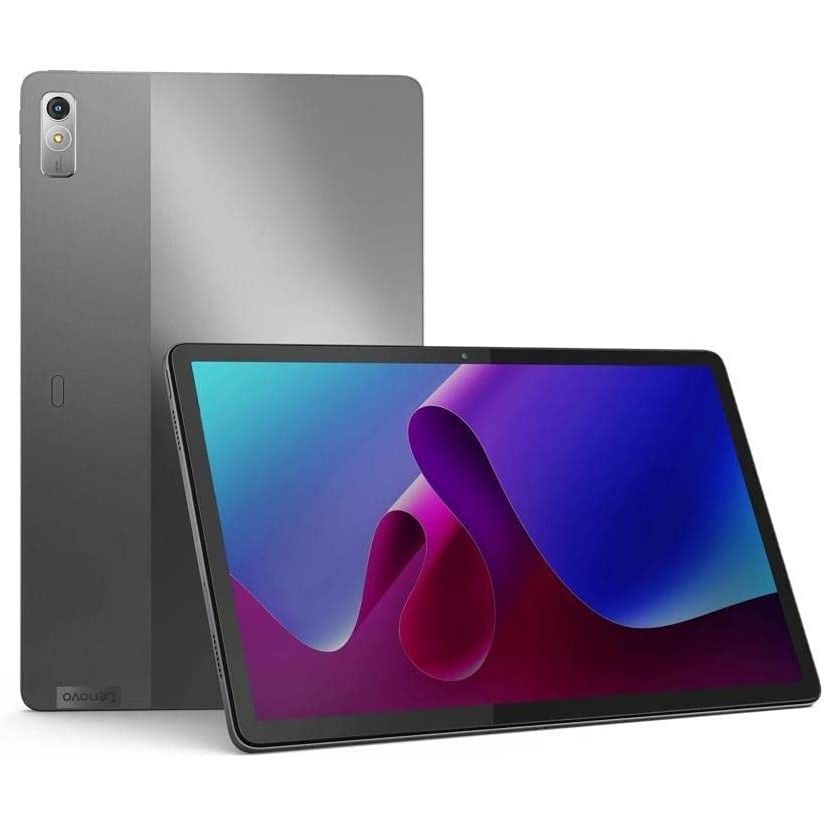
Lenovo Tab P11 Pro Gen 2
Great for movies
The Lenovo Tab P11 Pro Gen 2 may not have the most impressive internals, but it’s got a high-res 120Hz OLED display that’s excellent for watching videos.
- 120Hz OLED display
- Strong battery life
- Thin and light
- Performance could be better
If you’re in the market for a midrange media tablet, consider the Lenovo Tab P11 Pro Gen 2. With a middling MediaTek chipset and four gigs of RAM, the P11 Pro isn’t a powerhouse, but it’s got a great display: an OLED panel with a resolution of 2,560 x 1,536 and a refresh rate of 120Hz. Comics, videos, and games look excellent on this tablet. It also sports a thin and light construction, limiting fatigue during long use.

Lenovo Tab P11 Pro Gen 2 review: A tablet worthy of your next bingewatch
Your eyes will thank you after your next 8-hour marathon
Despite its performance limitations, the P11 Pro has a lot to offer, including fantastic-sounding Dolby Atmos-tuned speakers that will enhance any binge-watching session. It also has a battery capable of supporting hours of Netflix content, as you’ll enjoy 10 hours of video playback before needing a charge. At $400 or less, it’s a good option, unless you want to use your tablet for productivity tasks or especially demanding mobile games.
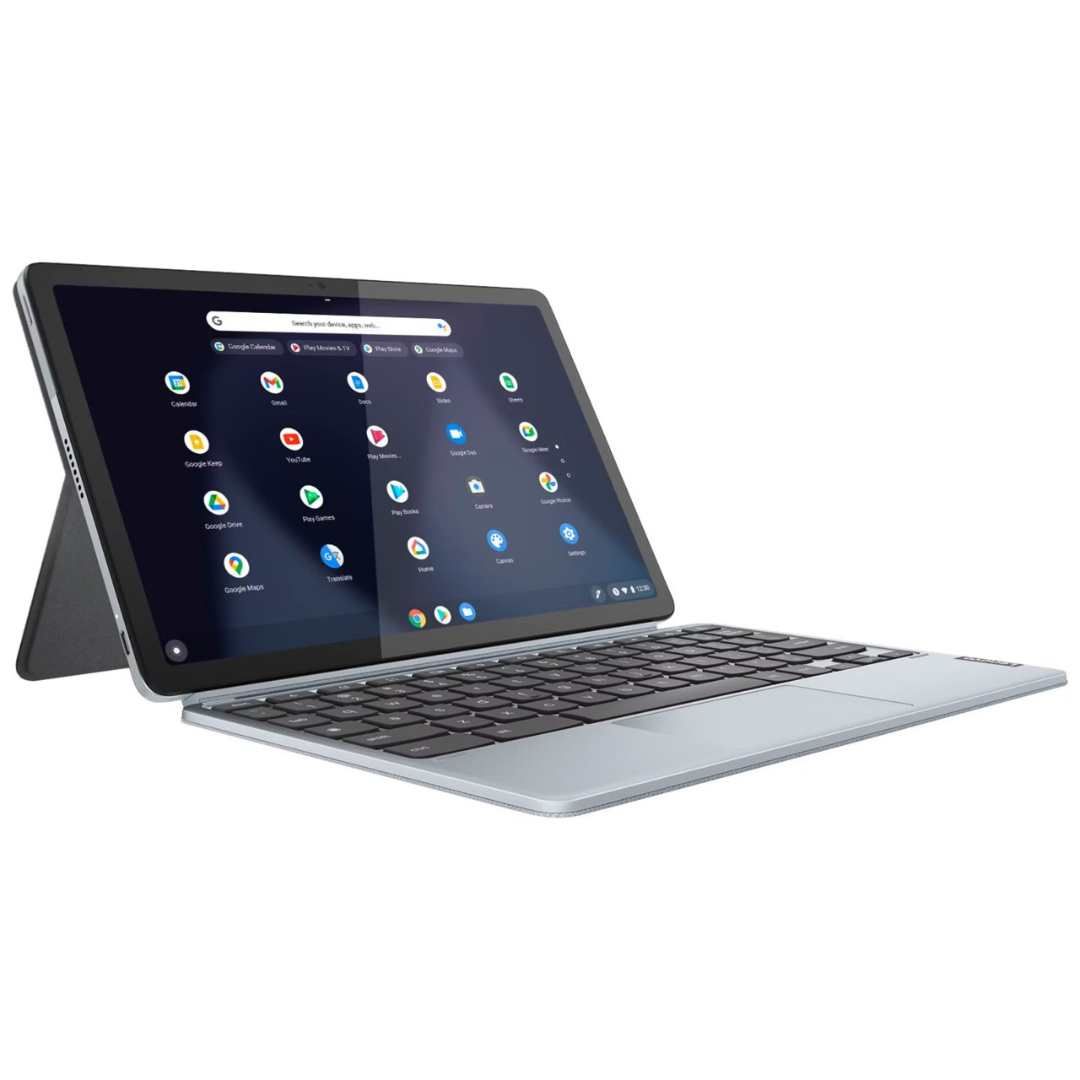
Lenovo Chromebook Duet 3
Portable and versatile
The Lenovo Chromebook Duet 3 isn’t an Android tablet, but it runs ChromeOS, so it has access to Android apps. The tablet has a nice screen and comes with a decent detachable keyboard case.
- Sharp, 2K display
- Very portable
- Long battery life
- Hard to use on your lap
- Crummy trackpad
- Not very powerful
Technically, the Lenovo Chromebook Duet 3 doesn’t run Android, but being a ChromeOS device, it can run Android apps. The tablet’s 11-inch, 2K display is sharp and just the right size for casual tablet use. The Duet 3 also comes with a detachable keyboard cover for doing more laptop-like tasks, which is something ChromeOS excels at. Its Snapdragon chipset provides ample horsepower for light-duty work, too.
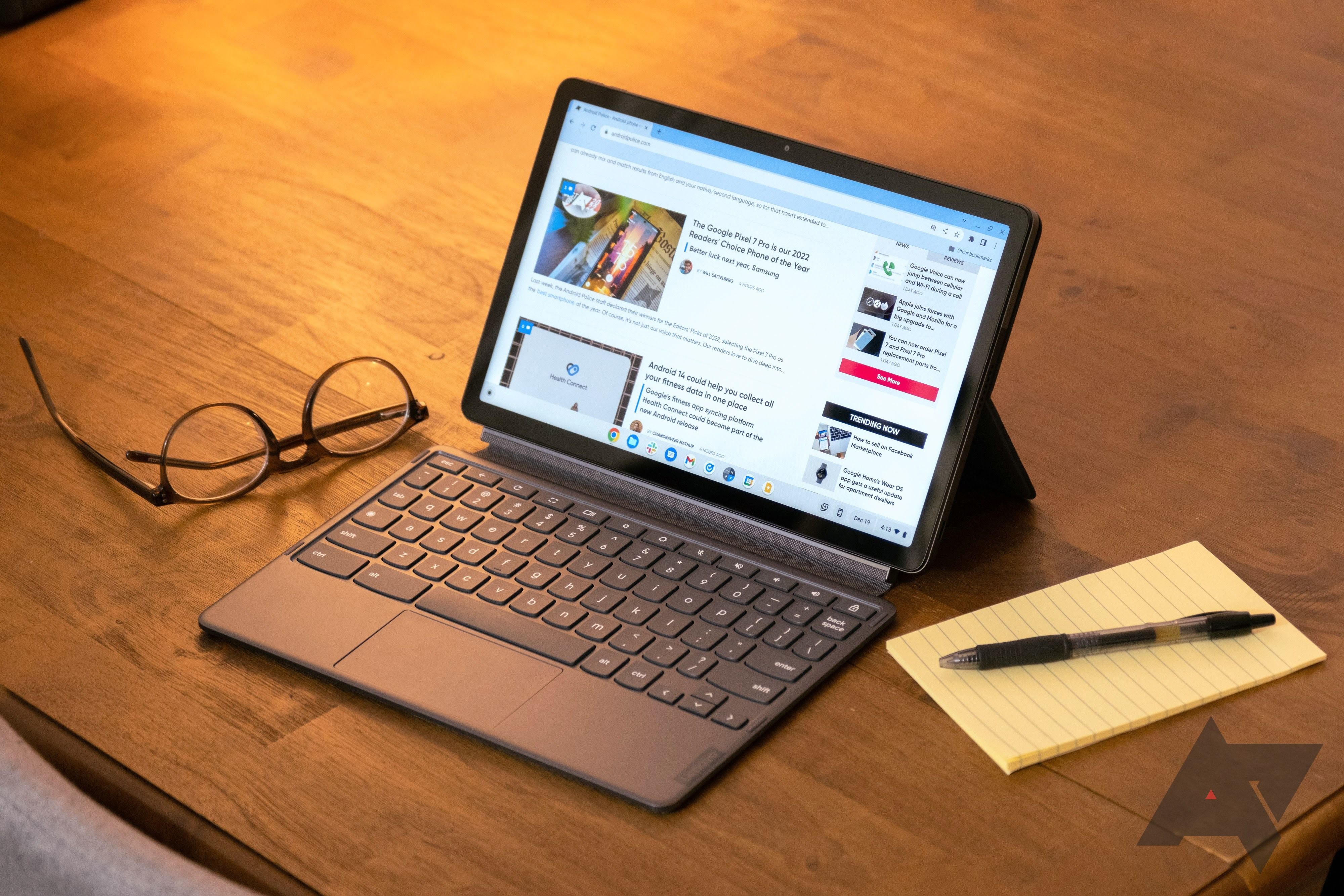
Lenovo Chromebook Duet 3 review: Go-anywhere ChromeOS companion
An affordable tablet with a good bundled keyboard? Yes, please
However, the detachable keyboard design makes using the Duet 3 in your lap a hassle, and its touchpad has too much drag to use comfortably for long periods. But if that all sounds good to you, the Duet 3 is a fine tablet for running Android apps.
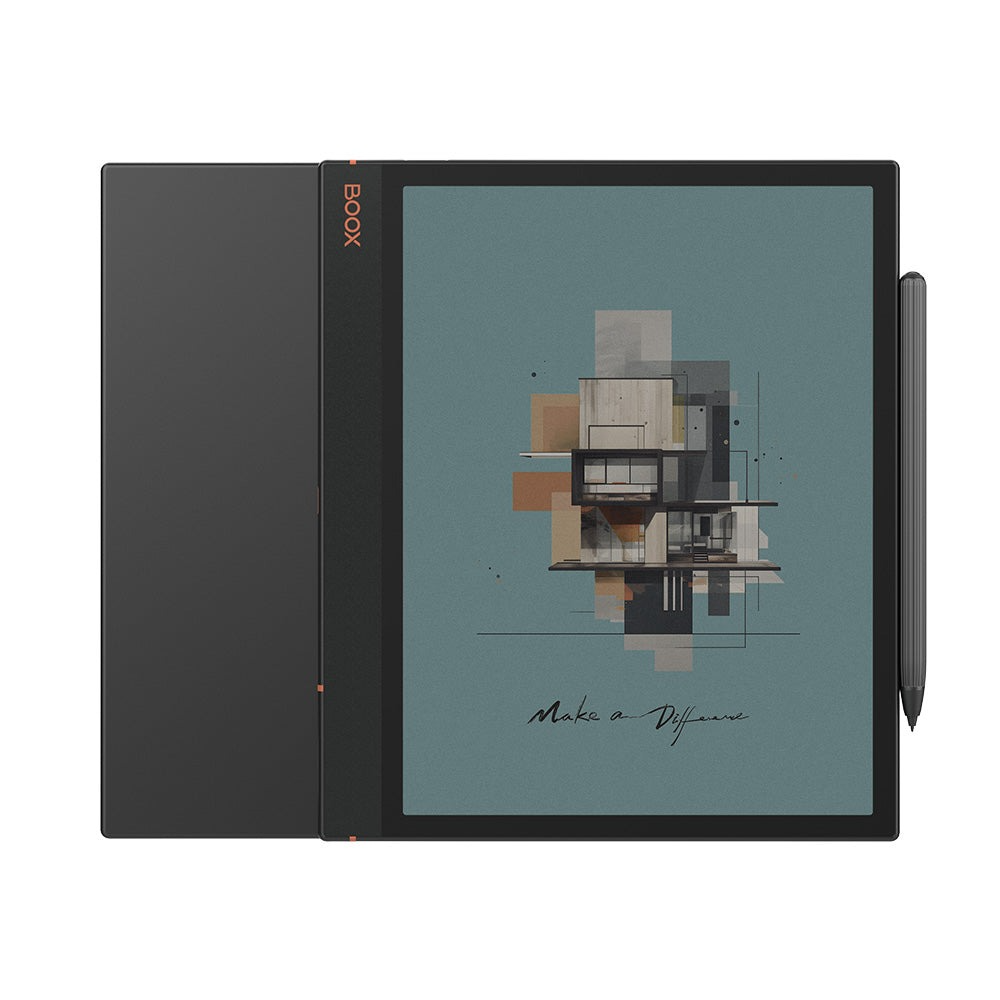
Onyx Boox Note Air3 C
Perfect productivity companion
The Onyx Boox Note Air 3C features a 10.3-inch Kaleido 3 color E ink display with a pressure-sensitive Wacom tablet layer, allowing for precise input for artists and digital note-takers. Without a traditional display, the Note Air 3C can last for days on a single charge, and it can run Android apps without problems for unlimited content possibilities.
- Wacom tablet layer
- Fantastic battery life
- Crisp display
- Software takes a bit of work to setup
- Not good for video content
The Onyx Boox Note Air 3C is ideal for users who want to do more with their tablet than binge-watch Suits on Netflix. It features a fantastic 10.3-inch Kaleido 3 color E ink display with backlighting. Black-and-white content looks sharp and limits eye fatigue, while color graphics are available for magazine content or comics. As expected, there are limitations with E ink displays. You shouldn’t expect fast-scrolling Android apps to work well, and video content is out of the question, but it’s not all bad news. The Note Air 3C goes on a single charge for days without a traditional LCD or OLED draining its battery.
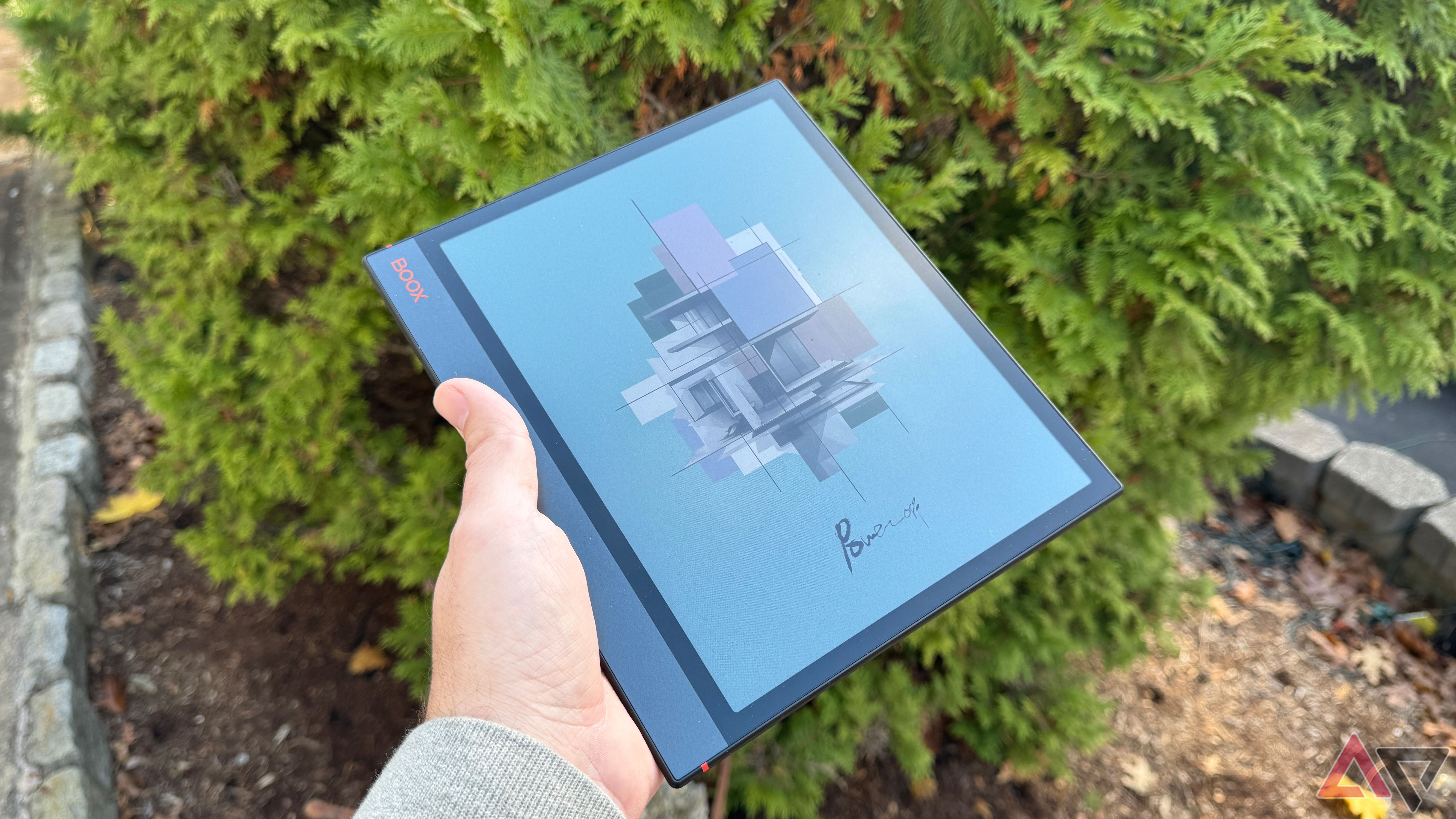
Onyx Boox Note Air 3C review: Filling the void between tablet and e-reader
It’s not flashy but the Note Air 3C fills an important niche
Onyx’s software takes a little getting used to, but the company does a fantastic job of including a user-friendly launcher that helps you get the most out of your Note Air 3C. You can customize the refresh rate of each app, allowing you to have a higher refresh rate for scrolling-intensive apps and a slower rate for e-reading applications.
Its native calendar app will make you want to throw away your pen-and-paper planner, and Onyx’s app suite makes the Note Air 3C a great productivity companion. The Note Air 3C features a Wacom tablet layer, allowing for precise, low-latency writing, perfect for artists or avid notetakers. The additional display layer negates the typical input lag from traditional E ink displays, making for an excellent stylus experience, all for $500.
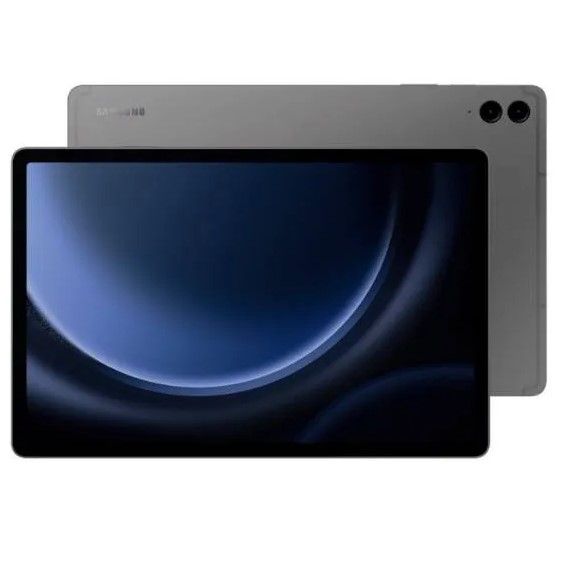
Samsung Galaxy Tab S9 FE+
Premium build at a mid-range price
The Samsung Galaxy Tab S9 FE+ gives users a mid-range option with a large, 12.4-inch display. It’s powered by an Exynos 1380, which won’t turn many heads, but still gets the job done for basic tasks. A premium build, IP68-rating, and bundled S Pen help provide value, with an available 12GB of RAM for added performance.
- Big, colorful display
- Bundled S Pen
- Great battery life
- No 5G connectivity
- Sluggish performance at times
The Samsung Galaxy Tab S9 FE+ is the company’s larger display, mid-range offering, providing a premium build at a price that won’t break the bank. For $600, the Tab S9 FE+ sports a gorgeous 12.4-inch LCD, and while we would’ve preferred an OLED panel, it’s still a quality viewing experience. Samsung matches the display with an aluminum frame, giving it a solid feel in the hand. AKG-tuned stereo speakers provide excellent sound with impressive volume that doesn’t distort. If you’re used to rocking out on your tablet, the S9 FE+ is worth a look.
Samsung bundles an S Pen with the Tab S9 FE+, adding value. If you’ve ever used a Samsung stylus, you’ll feel right at home on the FE+, with the company’s full pen software suite available. We enjoyed the versatility of using an S Pen on such a large display, and the FE+ is ideal for tablet artists. In addition, you get the reliability of One UI, with multi-window support and split-screen multitasking, allowing you to take full advantage of the 12.4-inch display.
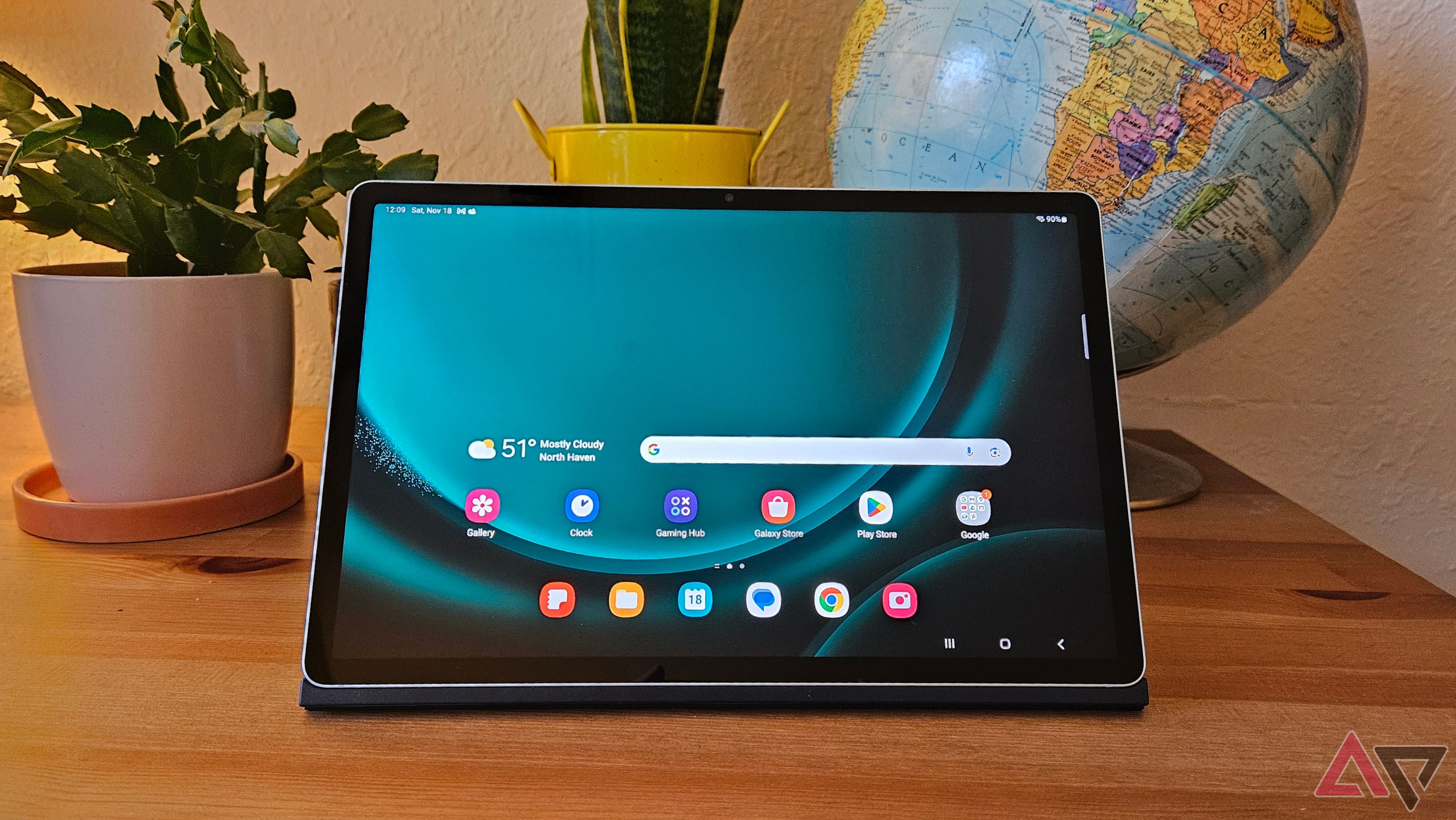
Samsung Galaxy Tab S9 FE+ review: Samsung’s best midrange tablet yet
Great build quality, battery life, and software make for a solid midrange tablet
If there is a drawback to the Tab S9 FE+, it’s under the hood. It’s powered by an Exynos 1380, the same chipset that drives the Galaxy A54. It’s not a bad performer but shows faults if pushed too hard. Gaming is not ideal on the S9 FE+, and switching between programs results in the occasional hitch. Overall, it will get the job done, but you’ll need to keep your expectations in check.
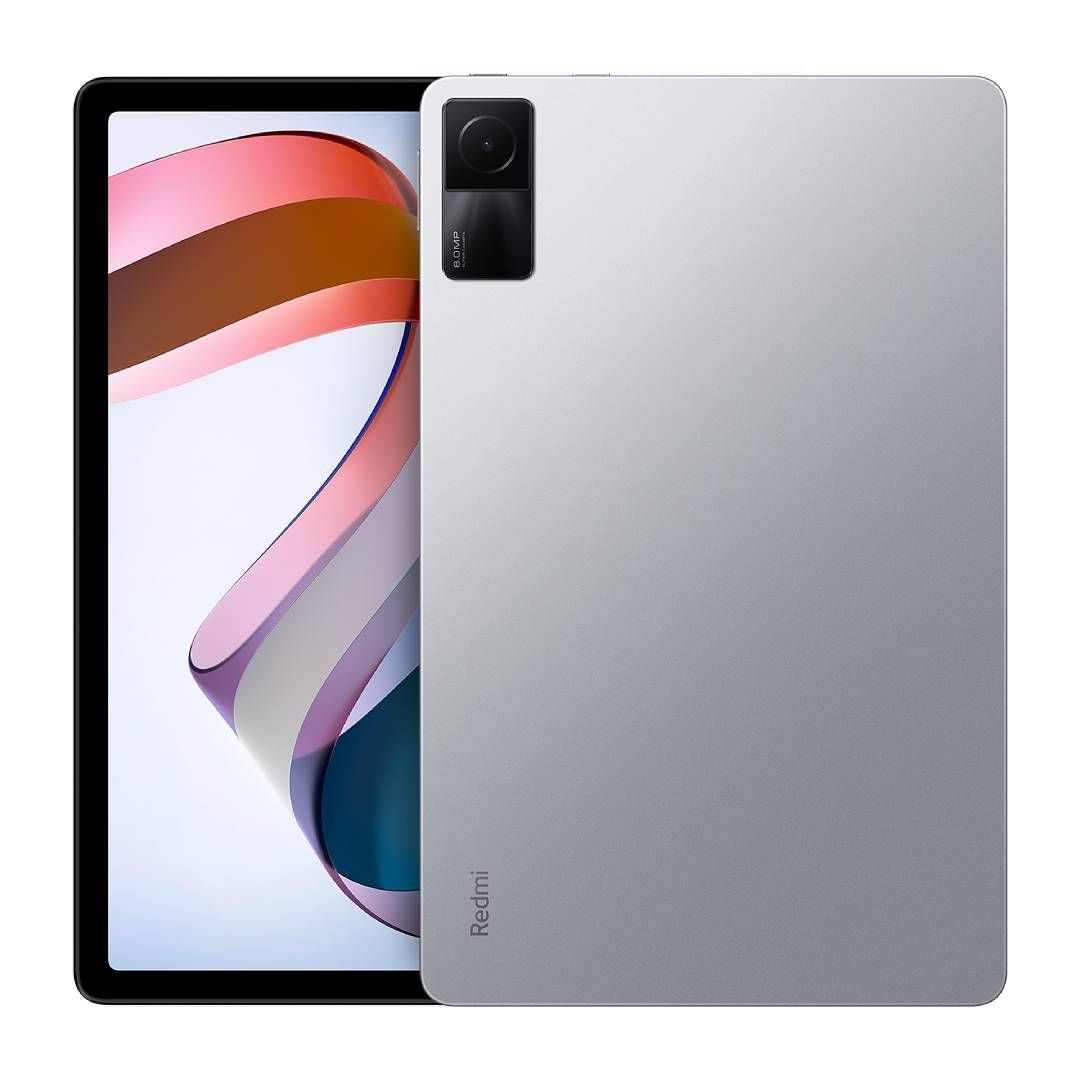
Xiaomi Redmi Pad SE
Multitasking on a budget
The Xiaomi Redmi Pad SE features a quality build, solid performance, and useful multitasking features, all for under $300. If you’re looking for a budget Android tablet with decent power, the Redmi Pad SE sports a Snapdragon 680, giving it more than enough horsepower for daily tasks at a price that won’t break the bank.
- Great multitasking features
- Good display for the price
- Solid build quality
- Sub-par speakers
- Unsure about software support
If you’re looking for something a little different, the Xiaomi Redmi Pad SE offers decent performance in an impressive package, all for under $300. It’s powered by a Snapdragon 680, giving it enough pop for daily tasks and even light gaming like Asphalt 9. Xiaomi also opted to add a 90Hz refresh rate to the display, allowing for smooth scrolling and improved user experience. It ships standard with 4GB of RAM, but 6 and 8GB models are available. The Dolby Atmos-tuned speakers sound great, and binge-watching is excellent on the 11-inch 1920×1200 LCD panel.
MIUI takes a little getting used to, but once you spend some time with it, it becomes second nature. Performance is snappy, and Xiaomi’s Android skin is relatively clean. Unfortunately, Xiaomi software support is spotty, and you can only expect three years of security updates and two major Android upgrades for your Redmi Pad SE. Despite the base model only having 128GB of storage, it supports MicroSD card expandable storage of up to 1TB, so you can take your files and shows offline on long flights.
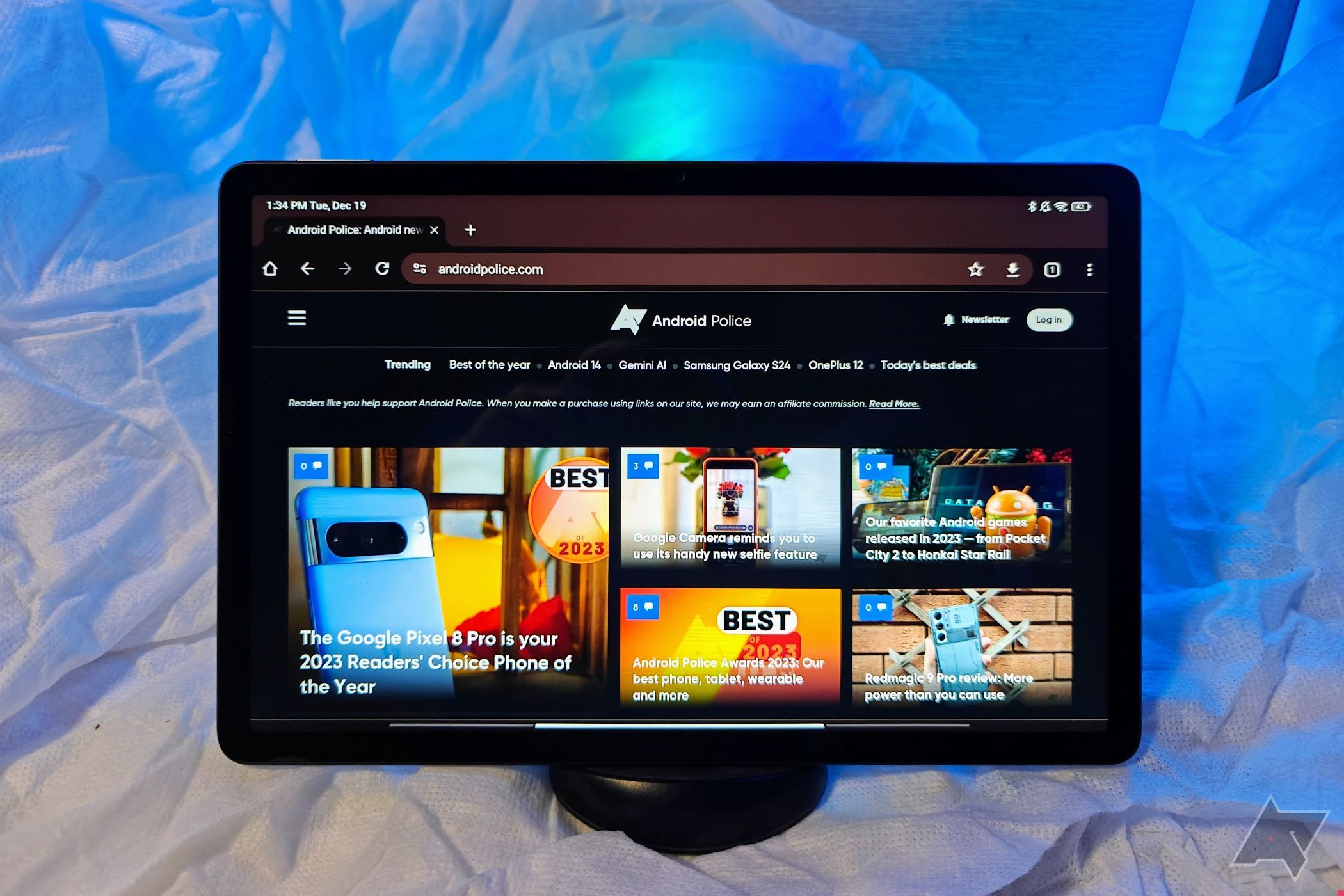
Xiaomi Redmi Pad SE tablet review: Budget champion
Finally, an Android tablet under $250 that dismantles expectations
The Redmi Pad SE’s battery life is excellent, with multiple days of use coming from a single charge of its 8,000mAh battery. If you run low on juice, plan ahead, as the Redmi Pad SE only features 10W wired charging, meaning it will take a few hours to top off. All told, it’s a solid experience for $240 that punches above its weight for performance and build quality.
The best Android tablet for you
Samsung’s predominance in this list is because it really does make the best Android tablets. The Galaxy Tab S9+ is an excellent place to start your search for your next Android slate. It’s well-built, has a speedy Snapdragon 8 Gen 2 chipset, has a great display, and is set to receive Android updates into 2027 (plus security updates for a year longer). You shouldn’t have any trouble making the Tab S9+ last whether you’re working, gaming, or binge-watching Netflix.
The OnePlus Pad and the Google Pixel Tablet are interesting mid-range options for different reasons. OnePlus’s tablet features a high refresh rate display and super-fast charging, while Google’s comes bundled with a Charging Speaker Dock (there’s no way to purchase the tablet separately) that lets it function like a smart display while it’s charging.
If you’re after something less pricey, Amazon’s Fire HD 10 will be worth a look. It’s not nearly as premium or powerful as our top picks from Samsung, but it starts at a much more palatable $140. Just don’t expect it to handle heavy-duty tasks, it’s a budget option through and through. The Fire line is more about consumption than productivity, but the software support is good, and the devices are great for kids.

Samsung Galaxy Tab S9+
This might not be Samsung’s best tablet, but it’s the best for most people. The screen is perfectly sized, it has the same chipset as even the S9 Ultra, and it’s also more modestly priced.




